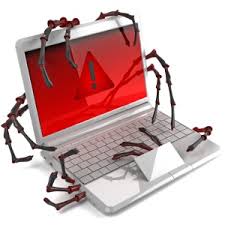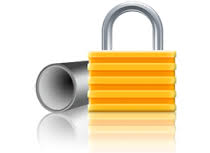
You don’t have to be a tech savvy to tell if your computer or server might be in trouble. The real problem is, knowing what you are dealing with and how you can fix it. Getting rid of malware can be difficult as it tends to get around unnoticed.
What is malicious software?
Malicious software, commonly known as malware, is any software that can harm your computer by disrupting the computer’s operating system, deleting documents, stealing protected and installing programs not approved by the user. Malware can take the form of viruses, Trojans, worms, spyware, adware, rootkits, and so on.
Signs you might be infected
You are getting an unusual amount of pop ups.
You might be familiar with pop-ups, those flashy banners appearing on different website letting you know that you are their millionth visitor and that you absolutely click on the to claim your prize. Many years ago, the Internet was suffocated with this kind of spam but, nowadays, thanks to built-in pop up blockers, the amount flashy advertisement received dropped. This is the reason why, getting an unusual amount of pop-ups might be a sign your computer is infected.
Computer slowdowns
If your computer is slow it doesn’t necessarily means that is infected, but if it freezes constantly, you can take it as a fair sign it might be in trouble. Usually, when a computer is infected, none of the essential commands will respond letting you with no other option than to reboot.
If your computer is awfully slow, you should try running a disk clean-up. If it remains slow, than check for other signs of a possible malware infection.
Your antivirus and firewall protection is disabled
Getting rid of malware can be a tricky task, as it has the ability to disable your antivirus and firewall without consent and block access to download sites of popular virus removal tools. Therefore, if you notice any suspicious activity, check if your antivirus is working. As a matter of fact, you should constantly check if your antivirus and firewall are enabled.
You notice changes of the web browser’s home page
Another way you can tell if your computer is infected is if your default home page is changed to an alternate page. Moreover, if, when you type a specific address but you are sent to a different, random site, than you should definitely run a full virus scan.
Your email account was hijacked
Even though we are constantly checking our inbox, we barley take a look at our outbox. As a result, if our friends don’t notice they started getting weird messages from you, it can take a long time until you discover your email has been hijacked and that your computer is in trouble.
Your browser is offline
Some malware have the ability to limit your internet access. So, if you cannot connect to the internet, but you are sure the network connectivity works, than it can be a sign of malware infection.
Regardless the problem, always remember to run a complete backup of your files, operating system or whatever you feel is important



 Talking of those annoying ads, promising you will lose 20lbs in one week if you try their funky trip, don’t you ever click on them. Every time you load one of those ads, a small army of spyware loads in the process. Likewise, be very careful when you download a file from an untrustworthy site, otherwise you will end up with malware that hitched a ride along with it.
Talking of those annoying ads, promising you will lose 20lbs in one week if you try their funky trip, don’t you ever click on them. Every time you load one of those ads, a small army of spyware loads in the process. Likewise, be very careful when you download a file from an untrustworthy site, otherwise you will end up with malware that hitched a ride along with it. Even if you’re not using a Virtual Private Network, or VPN, chances are you might have heard of it. Most probably, you associate the technology with corporate firewalls and ways of controlling the work habits of employees and limiting their Internet access. In reality, VPN is a great way to protect your online privacy, regardless of your profile. Whether you are a company who wants to protect its data or a regular computer user who simply wants to connect and browse securely on any network, VPN can be a very helpful tool. But what is a VPN exactly?
Even if you’re not using a Virtual Private Network, or VPN, chances are you might have heard of it. Most probably, you associate the technology with corporate firewalls and ways of controlling the work habits of employees and limiting their Internet access. In reality, VPN is a great way to protect your online privacy, regardless of your profile. Whether you are a company who wants to protect its data or a regular computer user who simply wants to connect and browse securely on any network, VPN can be a very helpful tool. But what is a VPN exactly?